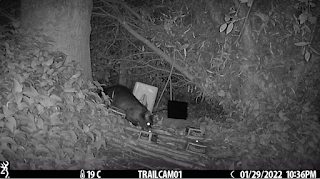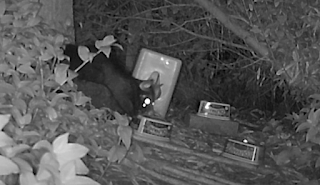As the month comes to a close we can reflect on the month of recording results at deployment site one.
We have used a combination of LED lights and sound lure at the location and regularly recorded the activity using trail cameras. Due to weather conditions and concerns about the viability of the cameras long term we have been reluctant to place the cameras out when we are aware that rain has been forecast. We have maintained the traps during this time, including the sound lure to monitor activations.
At the sound lure/LED location we have seen interest shown in the LED lights and a combination of behaviour around the sound lure. We have a month of HD footage showing interaction the highlights of which have been placed on this blog and on youtube.
Some basic background at the site - it is a riparian planting site close to a local river (which can be heard in the background when the camera is operating). Previously we have operated a variety of traps at this location to measure the viability and note the interaction or otherwise between the possums and trap/lure.
At the sound lure location we had captures of possums on January 1st (when the new block of recording starting the previous night), January 4th and January 16th. There were further activations on January 2nd and January 9th on these dates the trap was activated but no possum was trapped.There were 81 animals seen on camera, including three possums on one occasion. In the first half of the month there was an average of 4.3 animals on view during the monitoring and 1.1 during the second half of the month (there is some doubt about the cameras being used effectively during this period due to the weather and the age of the cameras however the physical evidence based on the captures and activation is not in dispute.).
At the non sound lure location there were captures on 31st of December, 3rd of January and an activation on the 20th of January.
It is our intention to record data for an entire year at this location using a combination of the sound lure and LED lights. The checks that are occurring are being carried out every day to ensure that the traps are cleared. We will endeavour to record as much footage as possible although we are reluctant to do so if the weather is predicted to be including rainfall due to concerns about the viability of the tracking cameras and exposing them long term to moisture. We have as we have stated before extensive HD footage at the site of the sound lure operating and possums in particular interacting with it. While we have uploaded some of this footage we have an external storage device with extensive footage.





